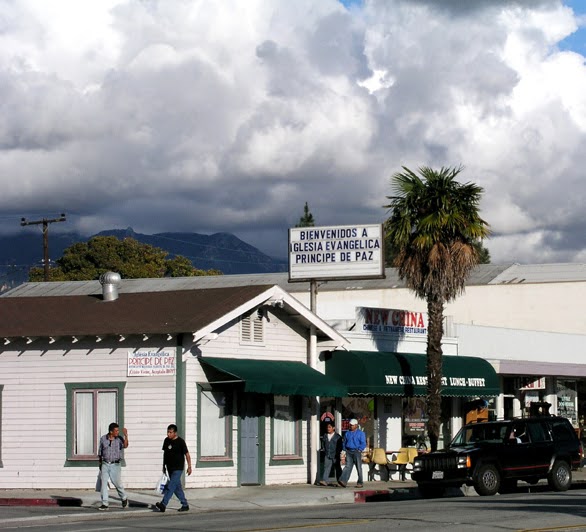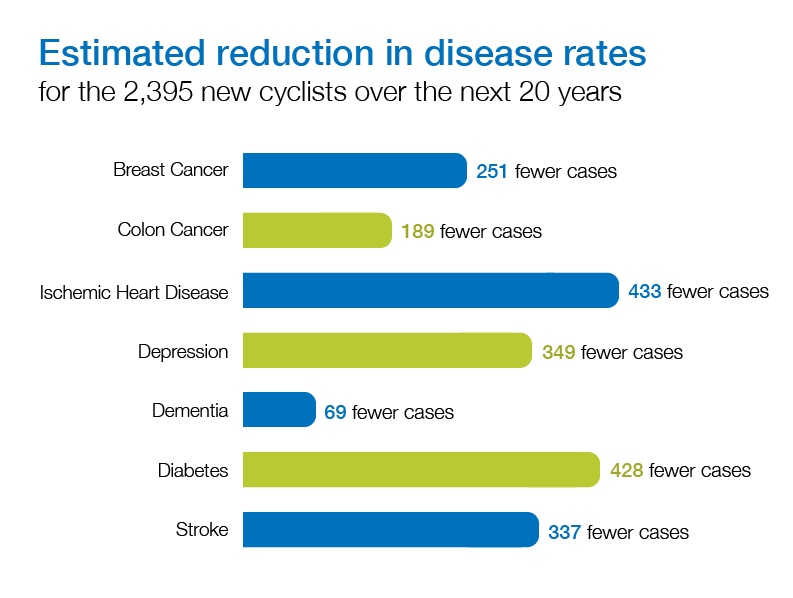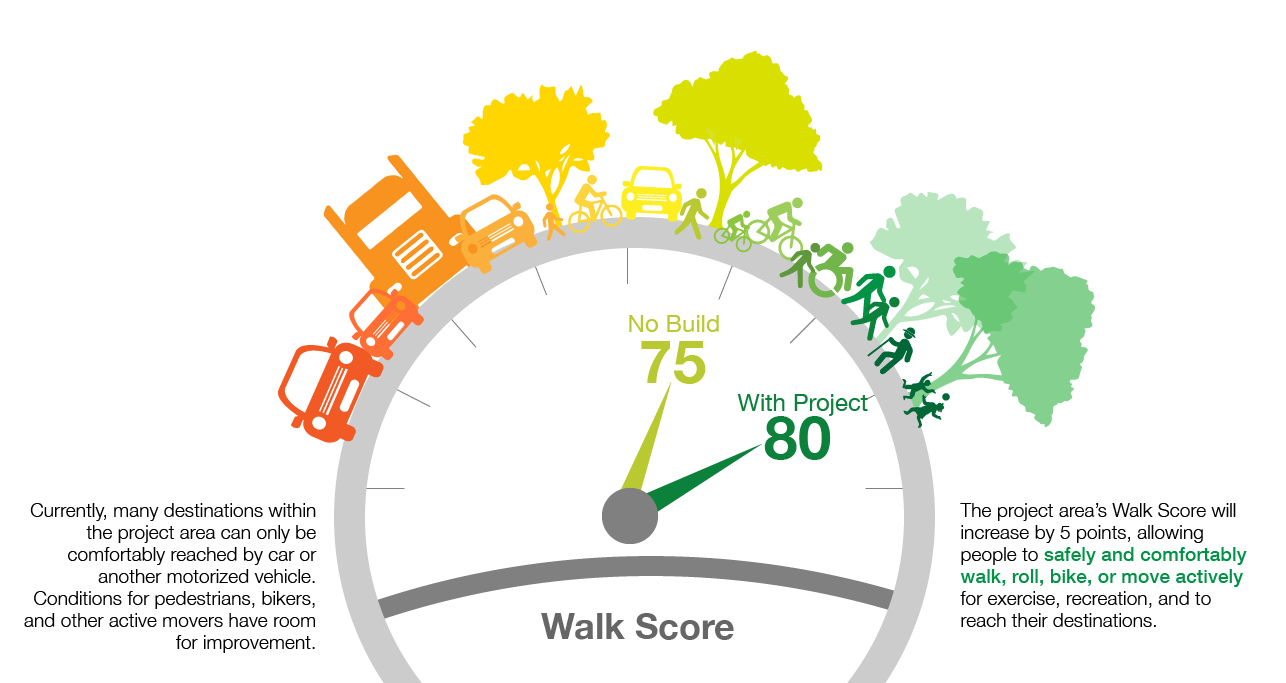The City of Goleta is testing out new solutions to improve accessibility and safety for people traveling by foot, on a bike, on wheels or using transit in their community. One such project is an “interim” street restriping in their historic business district, Old Town. To test out how this project would benefit Goleta residents, the City of Goleta used our Benefits of Complete Streets tool.

Goleta, CA is a city of over 32,000 people located eight miles west of Santa Barbara, near the University of California Santa Barbara campus and the Santa Barbara Airport. Since the City’s incorporation in 2002, it has developed a number of large and complex infrastructure improvement projects that address vehicle, pedestrian, and bicycle circulation as well as flooding within Old Town. Portions of these improvements have been completed and the significant remainder are slated to commence construction in the next few years. The projects include flood capacity improvements, the construction of traffic calming and circulation improving roundabouts, a new east road across Old Town, and a new north-south bike path that would connect the northern portion of the City to Goleta Beach and UCSB.
In 2021, the Goleta City Council set economic development as a major priority for the City. Their 2023-2028 Economic Development Strategic Plan identified investing in infrastructure and prioritization of historically disadvantaged communities as two key themes that emerged from community outreach and analysis. It also referenced that local business owners do not feel supported. These themes helped inform the city’s decision to invest in Old Town’s infrastructure.

Developed in the 1950s along Hollister Avenue, the Old Town business district has multiple automobile lanes and narrow sidewalks, designed for drivers to pass through quickly on their way to other destinations. Old Town is also located within a low-income residential area, and the many local businesses in the district have relied on low rents to keep the doors open. During the pandemic, when economic stress forced businesses across the country to close, these relatively lower rents helped local businesses in Old Town keep going against the odds.
But their success has come in spite of a lack of specific infrastructure investment along Hollister Avenue, which would make biking and walking safer and more convenient.
With few improvements for pedestrians and bicyclists along Hollister Avenue in the last several decades, pedestrian and bike use has not been stimulated which in turn has likely contributed to limited business growth and evolution in Old Town.
Save for a few modest improvements, including a crosswalk and a pedestrian beacon that allow people to safely cross to the Goleta Community Center, very few changes have been made to Hollister Avenue, and the roadway has evolved. Now, its primary function is to carry people through Goleta. This means noise and discomfort for people who live close to Old Town and want to walk around the area.
The lack of pedestrian and bicycle options makes it difficult for nearby residents to reach daily needs. The neighborhood is designated Disadvantaged Community (DAC), with 32 percent of households in the predominantly Latinx community surrounding Old Town living in poverty. 10 percent are seniors over the age of 65. People in both of these demographics are less likely to have access to a car. More opportunities to walk and bike safely along Hollister Avenue would make it easier for these local residents and all community members to reach the essential destinations near them, including transit stops, stores, restaurants, and the nearby community center.
To turn Old Town into a more pedestrian-friendly district, the city is testing out a half-mile interim restriping project along Hollister Avenue, starting at Fairview Avenue and ending at Kellogg Avenue. This project will convert the five-lane roadway into a three-lane street, calming traffic and thereby create a more safe and user-friendly environment for pedestrians and bicyclists alike. The reduction in lanes will also create space for a buffered bike lane, so cyclists are better protected when traveling along Hollister.
The city is making traffic signal modifications to make it easier for pedestrians to cross the street. They are also redesigning parking along Hollister to further enhance safety, moving some parking to the north side of the street so drivers can more easily see people trying to cross the road. The city hopes these changes will enhance safety in the area, help local residents reach their everyday needs, and support Old Town’s businesses. Results from the interim restriping project, if successful, may lead to consideration of permanent changes later on.
Predicting the impacts of a redesigned Hollister Avenue
Hollister Avenue has typically been used for thru traffic, but that use has always come at the expense of the street’s primary purpose as the neighborhood’s commercial heart. The Complete Streets tool is helping the city to understand how changes to the roadway will better serve the people who live, work, and shop near Old Town, rather than primarily benefiting the people who want to drive through it.
The restriping project is just one part of the city’s efforts to make their streets more functional for all road users, but given the businesses along Hollister Avenue, this change is an important one to get right. The Complete Streets tool gave them valuable insights into how the restriping project will impact fatalities, injuries, public health, and pedestrian and cyclist activity in the area before they make permanent changes.
Key benefits expected

Reduction in fatalities and injuries. The Hollister Avenue restriping project builds upon prior efforts to make Old Town safer, including the recently-completed sidewalk infill project as well as a pedestrian-activated crossing. The Complete Streets tool allowed the city to model how changes to the roadway, such as installing a high visibility crosswalk, would reduce the risk of death and injury for people traveling along Hollister. In this case, the tool calculated that the risk of fatalities would be reduced by 60 percent, and pedestrian injuries would be reduced by 16.9 percent.

More pedestrian and cyclist activity, and improved public health. If left in place, the new buffered bike lane would increase the number of bicycle trips in the area by 2,394 over the course of 20 years. More opportunities to bike and walk will translate to health benefits. The Complete Streets tool calculates health benefits based on estimated pedestrian and cyclist activity in the area. This restriping project, the tool predicted, would reduce 280 health-related deaths over 20 years, including deaths due to diabetes, stroke, heart disease, breast cancer, and even depression.

Reduced carbon footprint and greenhouse gasses. Providing alternatives to driving can reduce harmful climate emissions. The cycling environment module of the Complete Streets tool provides a quantified prediction of reductions in greenhouse gas emissions and other air pollutants that are known to be harmful to human health, or are precursors to ground-level ozone. In the case of this project, the tool found reductions in several harmful emissions—including carbon monoxide, carbon dioxide, nitrogen oxides, particulate matter, sulfur dioxide, and volatile organic compounds—leading to cleaner air for people living nearby.
Improvements to Hollister Avenue will lead to a safer, healthier, and more convenient Old Town for all of Goleta, and the Benefits of Complete Streets tool helps quantify those benefits for city leaders and residents. If this interim project proves successful, the City of Goleta plans to make the restriping permanent and continue to build upon the project’s success with other safety interventions throughout the city.